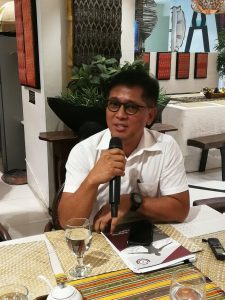
The University of the Philippines-Mindanao (UPMin) is coming up with key proposed programs that would need about P12 billion in funding, a top official said.
The issue will be brought up when alumni of the UP system meet in an assembly in the third quarter of the month here, although the university is also presenting the proposals to the national government this week, said Prof. Larry N. Digal, UPMin chancellor.
He said that during the regional institute assembly, which will take place on November 22 and 23, the university will present the plans and those members of Congress who are invited to attend will be urged to discuss these for congressional considerations.
“Part of our plan is really to make sure we become… our role as a hub of UP programs to address gaps in Mindanao will be strengthened,” he said as part of the plan is to bring programs from other campuses to the Mindanao campus.
The proposals are ”part of our five-year development plan,” said Digal during the Wednesdays forum at Abreeza Ayala Mall Wednesday, pointing out that the biggest one is the increase in the number of personnel, particularly members of the faculty.
Of the eight constituent universities, UPMin only has about 2% of the 4,700 faculty members of the entire system, Digal lamented. The proposal, he said, is to at least double the number to about 220, from 96. It is the only constituent university that was created by law, Republic Act 7889.
Any proposal for increase in human resources in a government institution like the university needs the approval of the Department of Budget and Management which will make a corresponding appropriation.
Sebastian L. Angliongto, chair of the University of the Philippines Mindanao Foundation Inc., a group of UP alumni, said his group is also going to lobby before members of Congress for the funding for the proposals.
“We also want MinDA (Mindanao Development Authority) to push for these (proposals),” said Angliongto, who once served as chair of Mindanao Development Council, forerunner of MinDA, during the time of President Joseph E. Estrada.
Another proposal, Digal added, is the Mindanao Sports Development Program as the university has its own 20-hectare sports complex within its 204-hectare campus. The plan, he said, is that the university will establish the College of Human Kinetics as well as non-degree sports training activities in partnership with the Philippine Sports Commission.
Members of the faculty of the proposed new college will be among those whose positions will be created when more slots for members of the faculty are provided.
In relation to the establishment of the program will be the development of Elite Athletes Sports Academy that will become the training institutes for elite athletes in Mindanao.
Another proposal is the establishment of a botanical garden that will highlight the 11 tribes of the city as well as the establishment of a cultural center in partnership with the Department of Tourism. “We are offering our site to house the cultural center,” said Digal, pointing out that only about 20% of the campus has been developed.
The university is also proposing for the establishment of the Mindanao Studies Program Center whose components would include a museum, a research center and a science and technology park. The park will be established in partnership with the Department of Science and Technology and the Department of Trade and Industry.
